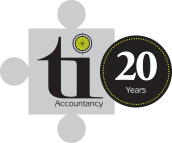If you rent out property in the UK, then Section 24 probably affects you!
The Changes
From April 2017 tax relief on loan interest of residential property income has been restricted. This is being phased in over the next 4 years so by 6th April 2020 loan interest will be restricted and only basic rate tax relief will be given.
The loan interest costs that fall under the new rules include:
- Incidental costs of obtaining loans, mortgages, overdrafts, premiums, discounts and returns
- Potentially any loans taken out to run a residential property letting business (whether the loan is for a business office, car or otherwise)
The new rules apply to individuals, partnerships, limited liability partnerships, and trusts, they do not affect property-letting businesses run through limited companies or furnished holiday lets or property development businesses.
If the business lets both residential and commercial properties then loans or proportions of loans relating to the residential property business apply.
How is the relief calculated? Let’s keep this simple …
The Old Rules:
£10,000 rental income
£ 5,000 mortgage interest costs
£ 1,000 other expenses
£ 4,000 profit
A basic rate tax payer (currently 20%) would pay tax of £800, and a higher rate tax payer (currently 40%) would pay £1,600.
The New Rules:
This is phased in over 4 years so in the first 3 years you will see a gradual shift
| 2017-18 | 75% of normal interest – 25% basic rate tax relief |
| 2018-19 | 50% of normal interest – 50% basic rate tax relief |
| 2019-20 | 25% of normal interest – 75% basic rate tax relief |
| 2020-21 | 100% basic rate tax relief |
So by 2020 the same rental income would look like this
£10,000 rental income
£ 5,000 mortgage interest costs – NOT DEDUCTABLE
£ 1,000 other expenses
£ 9,000 profit
A basic rate tax payer would pay £1,800 on the £9,000 profit and a higher rate tax payer £3,600.
However, everyone gets to claim a basic rate deduction of 20% of the £5,000 mortgage interest costs, which equals £1,000.
Therefore the basic rate tax payer would still only pay £800 as in the old rules, but the higher rate tax payer is paying £1,000 more.
But this doesn’t mean that the basic rate taxpayer is unaffected. Because the deduction is applied after calculating the taxable profit, everyone’s “profit” has actually increased — from £4,000 to £9,000.
This means those property owners whose income (from property plus employment and any other sources) is currently below the higher rate threshold may end up getting pulled into the higher rate band as a result of their higher property “profits”.
So what are your options?
You may well just choose to accept this change, however, there are a few options you may wish to consider:
- Reducing your debt burden (review your borrowings or consider selling a rental property.
- Increase the rent charged.
- Increase personal private pension contributions (This will extend your personal basic tax rate by the amount you contribute).
- Move beneficial ownership to spouse with lower marginal rate of tax
- Change the residential lets into a Furnished Holiday Letting (There is a specific criteria to be a furnished let)
- Move the property portfolio into a limited company (This could possibly create two tax issues: Capital Gains Tax for you personally and Stamp Duty Land Tax for the company).
At TI Accountancy we are doing a Property Impact Review on all clients when they are bringing in their 2016/17 tax return to help them understand how this reform will affect them, so they are prepared for any future tax increases this may incur. Are you prepared for this change in your tax liabilities?





